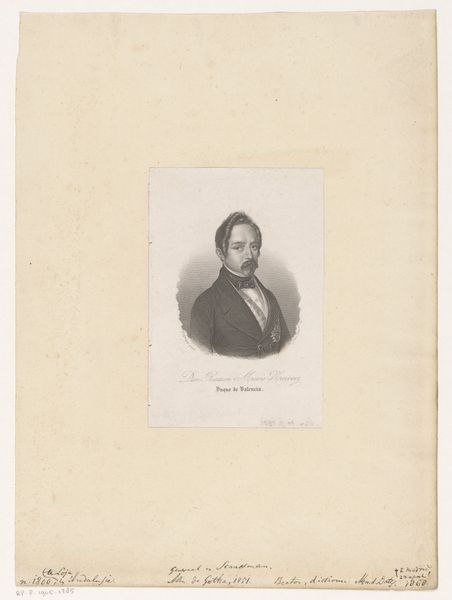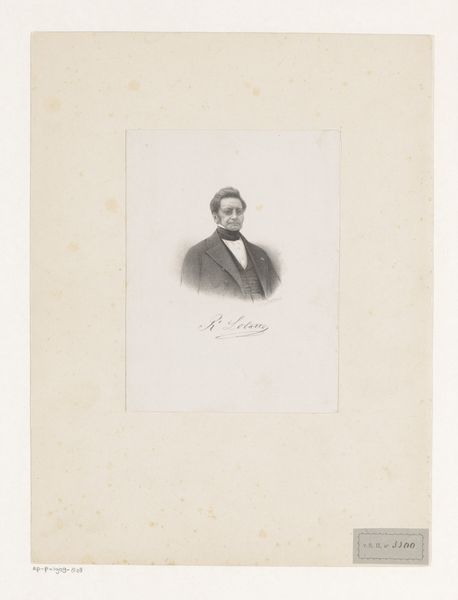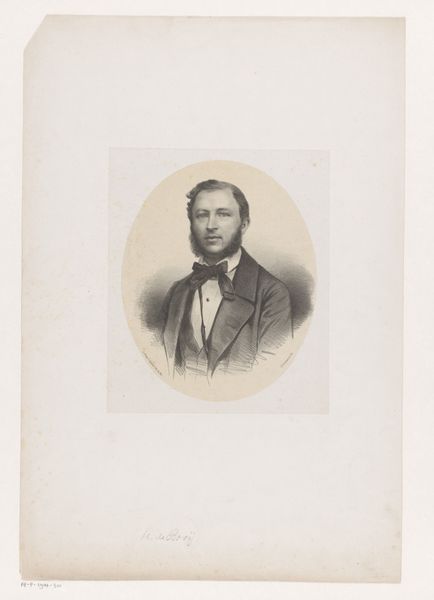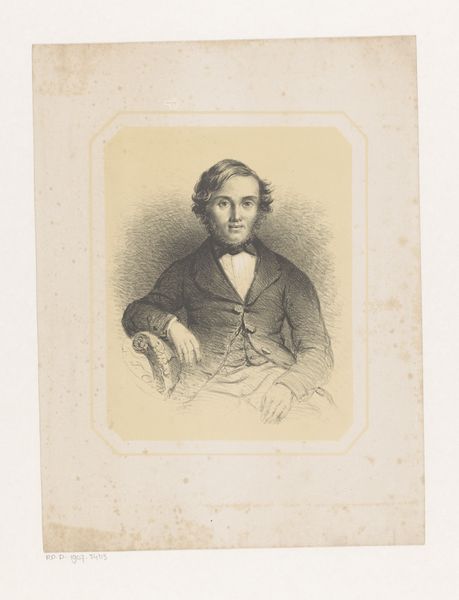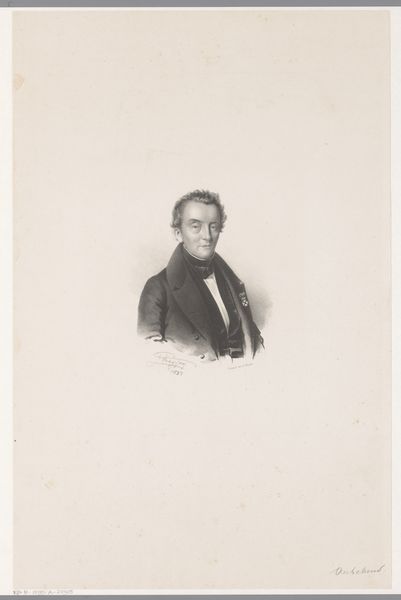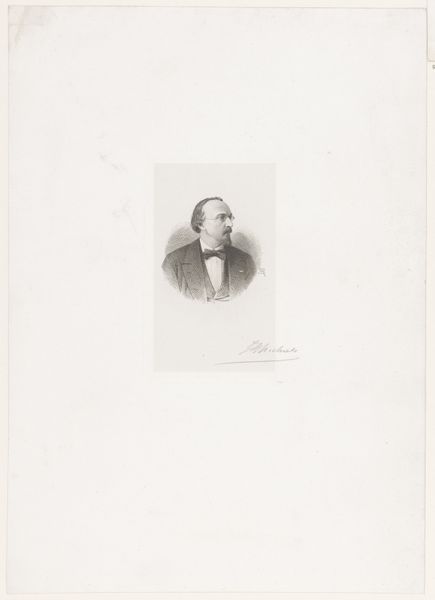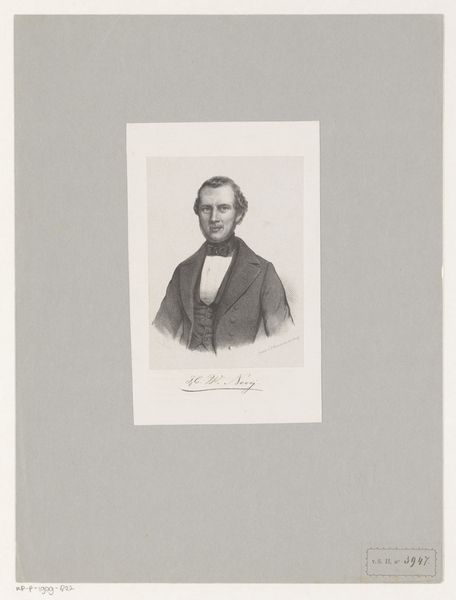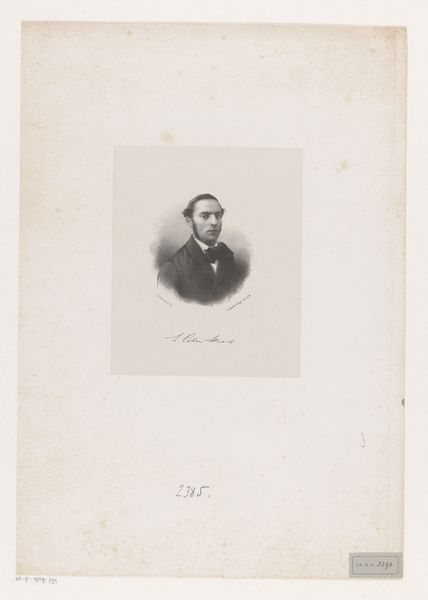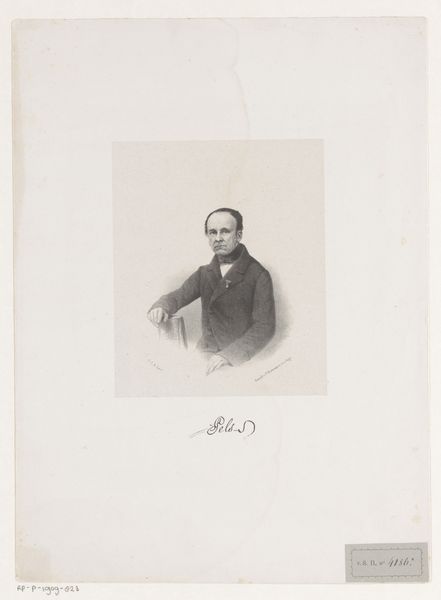
print, graphite
#
portrait
# print
#
archive photography
#
graphite
#
realism
Dimensions: height 220 mm, width 160 mm, height 340 mm, width 250 mm
Copyright: Rijks Museum: Open Domain
Editor: This is a graphite print, "Portret van Willem Lodewijk Overduyn," by Johan Hendrik Hoffmeister, dating from around 1851 to 1883. It feels very formal, and his direct gaze is quite intense. What do you see in this portrait? Curator: The gaze, you're right, it’s unwavering. And the artist has skillfully used light and shadow to give Overduyn a sense of gravitas. I see a man rooted in the burgeoning world of science and industry, evidenced by his attire which is proper yet austere. Consider the mid-19th century; photography was young. What symbols or signifiers of the period might we find here beyond just a likeness? Editor: Well, his dark suit and tie are obviously of that era. He looks very...serious, not unlike a daguerreotype portrait. I suppose the seriousness might also be symbolic? Curator: Precisely. The stiffness in posture, the controlled expression - they weren't just fashion. They spoke to a certain ideal of masculine virtue – restraint, intellect, civic duty. This image, circulated as a print, could act as a symbol, imprinting such virtues upon the broader public consciousness. Do you think this portrait intends to immortalize more than just a face? Editor: Absolutely. It's less about Overduyn the individual, and more about Overduyn the representative of certain values that society wanted to uphold. I hadn't considered it as a carrier of those social ideals. Curator: And that's the beautiful, insidious power of visual culture. It silently transmits messages, shaping not only how we see, but how we think and remember. It encourages us to find meaning in those silent cues. Editor: I’ll definitely look at portraits differently from now on. I see now how even a simple print can reveal layers of meaning about a person and a whole era.
Comments
No comments
Be the first to comment and join the conversation on the ultimate creative platform.
